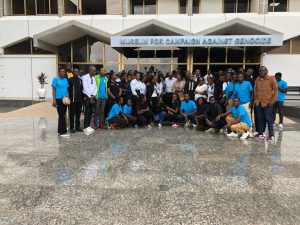Rwanda’s Urbanization and Fertility Shift: Balancing Growth in a Densely Populated Landscape
3 min read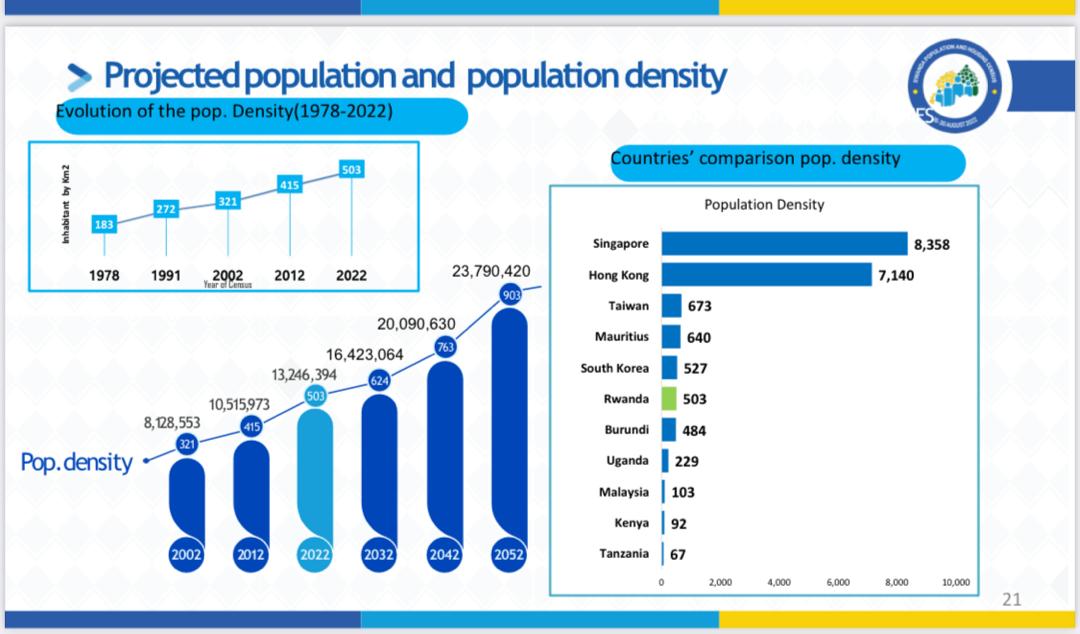
Characterized by a rapid urbanization and evolving fertility trends, Rwanda faces a delicate balance as it navigates the challenges posed by its dense population and demographic changes revealed in the recent 2022 Rwanda Population and Housing Census.
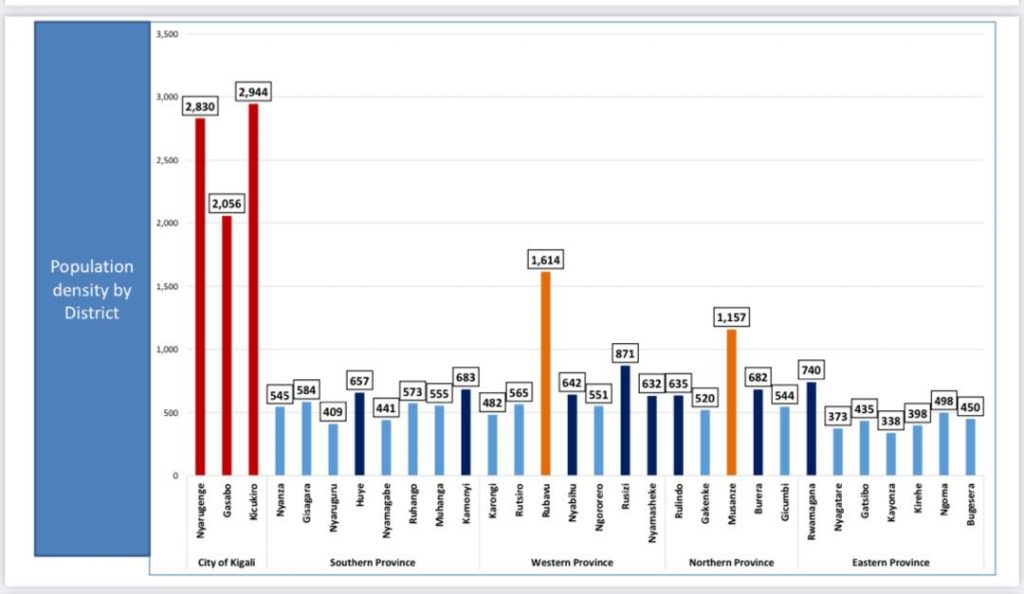
The census paints a vivid picture of Rwanda’s demographic landscape: a comparatively small yet densely populated country, with an average of 503 inhabitants per square kilometer. This density is projected to surge further, estimated to reach 903 inhabitants per square kilometer by 2052, signifying the intensifying pressure on the country’s land and resources.
Urbanization, predominantly concentrated in Kigali, Rwanda’s capital, encompasses approximately 13.2% of the total population. However, a staggering 61.3% of this urban population resides in informal settlements, reflecting the challenges of managing urban growth and infrastructure development.
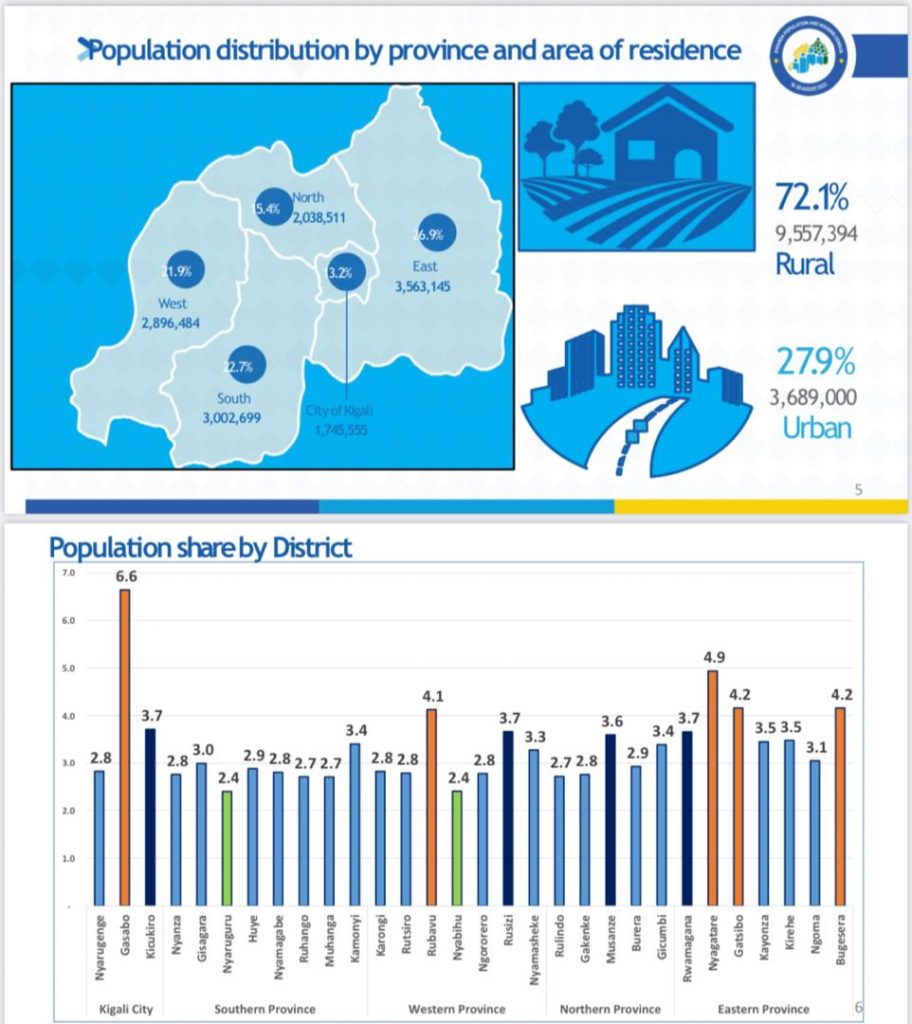
Living in informal settlements amidst Rwanda’s urban shift presents challenges—limited resources, basic services, and crowded spaces. Some of us dream of improved urban living—adequate housing, healthcare, and education. While recognizing government efforts, we seek more inclusive policies, prioritizing our needs for sustainable urban development. Collaborative action can ensure a dignified life, where our voices shape initiatives, fostering a brighter future in balanced, densely populated landscapes. Said Kalisa whose name have been changed.
While Rwanda has made remarkable strides in curbing fertility rates, witnessing a significant decline from 5.9 children per woman in 2002 to 3.6 children per woman in 2022, the persistent relatively high fertility rate juxtaposed with urbanization presents intricate challenges.
However, it is assumed that the TFR would decrease from 3.6 children per woman in 2022 to 2.3 children per woman in 2052.
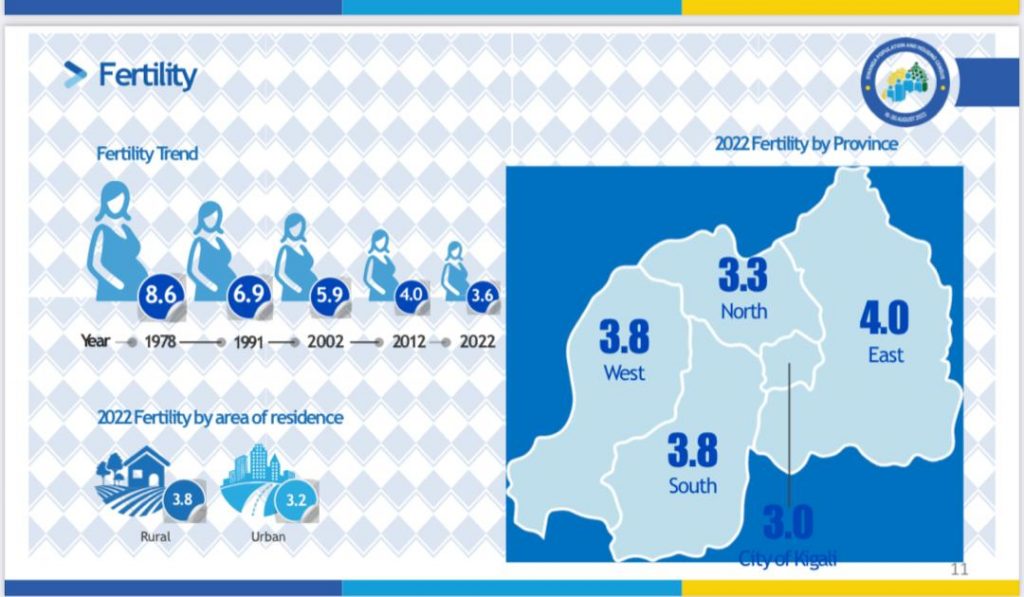
Moreover, this trends reflects the demographic transition from high birth and death rates to lower ones and a demographic window for the country. Total fertility rate decreasing from 3.6 children per woman to 2.9 (high scenario), 2.6 (medium scenario) and 2.3 (low scenario). The annual number of births is projected to increase from 367,312 in 2022 to 465,194 in 2052 according to the medium scenario.
The United Nations Fund for Population (UNFPA) whose mandates are to deliver a world where every pregnancy is wanted, every childbirth is safe and every young person’s potential is fulfilled, advocates for Rwanda’s comprehensive approach in managing urbanization’s impact on fertility. Empowering women’s reproductive rights, providing accessible healthcare, and promoting sustainable urban planning are pivotal. Balancing growth amidst dense landscapes necessitates prioritizing reproductive health, gender equality, and population dynamics for a resilient and equitable future.
The 5th RPHC shows that the urban population is expected to increase from 27.9% in 2022 to 70% in 2052 as stated in the vision 2050. This rapid growth translates into an expected urban population that is multiplied by a factor of four in the next 30 years: 3.7 million in 2022 to 16.6 million, according to the medium scenario. However, the rural population is expected to increase from 9.5 million in 2022 to: 9.6 million in 2026, then start decreasing up to 7.1 million in 2052 according to the medium scenario. Both the urban and rural populations will be less young with a median age increasing from 22 years to 27 years for the urban and from 20 years to 28 years for the rural between 2022 and 2052.

Rwanda’s urbanization journey intertwined with fertility dynamics underscores the urgency for nuanced policies and interventions. Striking a balance between urban development, family planning initiatives, and sustainable resource management becomes imperative for steering Rwanda towards a harmonious and equitable future. As Rwanda grapples with these demographic intricacies, proactive measures and inclusive strategies will pave the way for a resilient and prosperous nation in the years to come.
Mukantwari Magnifique

